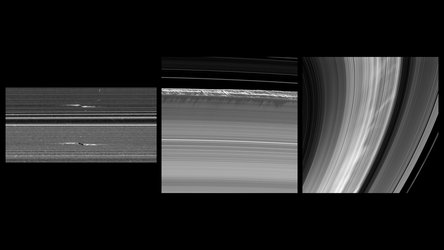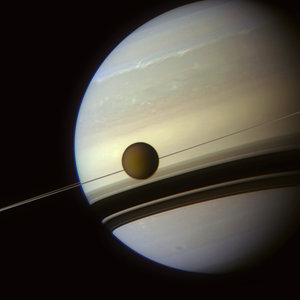Accept all cookies Accept only essential cookies See our Cookie Notice

About ESA
The European Space Agency (ESA) is Europe’s gateway to space. Its mission is to shape the development of Europe’s space capability and ensure that investment in space continues to deliver benefits to the citizens of Europe and the world.
Highlights
ESA - United space in Europe
This is ESA ESA facts Member States & Cooperating States Funding Director General Top management For Member State Delegations European vision European Space Policy ESA & EU Space Councils Responsibility & Sustainability Annual Report Calendar of meetings Corporate newsEstablishments & sites
ESA Headquarters ESA ESTEC ESA ESOC ESA ESRIN ESA EAC ESA ESAC Europe's Spaceport ESA ESEC ESA ECSAT Brussels Office Washington OfficeWorking with ESA
Business with ESA ESA Commercialisation Gateway Law at ESA Careers Cyber resilience at ESA IT at ESA Newsroom Partnerships Merchandising Licence Education Open Space Innovation Platform Integrity and Reporting Administrative Tribunal Health and SafetyMore about ESA
History ESA Historical Archives Exhibitions Publications Art & Culture ESA Merchandise Kids Diversity ESA Brand Centre ESA ChampionsLatest
Space in Member States
Find out more about space activities in our 23 Member States, and understand how ESA works together with their national agencies, institutions and organisations.
Science & Exploration
Exploring our Solar System and unlocking the secrets of the Universe
Go to topicAstronauts
Missions
Juice Euclid Webb Solar Orbiter BepiColombo Gaia ExoMars Cheops Exoplanet missions More missionsActivities
International Space Station Orion service module Gateway Concordia Caves & Pangaea BenefitsLatest
Space Safety
Protecting life and infrastructure on Earth and in orbit
Go to topicAsteroids
Asteroids and Planetary Defence Asteroid danger explained Flyeye telescope: asteroid detection Hera mission: asteroid deflection Near-Earth Object Coordination CentreSpace junk
About space debris Space debris by the numbers Space Environment Report In space refuelling, refurbishing and removingSafety from space
Clean Space ecodesign Zero Debris Technologies Space for Earth Supporting Sustainable DevelopmentLatest
Applications
Using space to benefit citizens and meet future challenges on Earth
Go to topicObserving the Earth
Observing the Earth Future EO Copernicus Meteorology Space for our climate Satellite missionsCommercialisation
ESA Commercialisation Gateway Open Space Innovation Platform Business Incubation ESA Space SolutionsLatest
Enabling & Support
Making space accessible and developing the technologies for the future
Go to topicBuilding missions
Space Engineering and Technology Test centre Laboratories Concurrent Design Facility Preparing for the future Shaping the Future Discovery and Preparation Advanced Concepts TeamSpace transportation
Space Transportation Ariane Vega Space Rider Future space transportation Boost! Europe's Spaceport Launches from Europe's Spaceport from 2012Latest

Saturn’s B ring peaks
Thank you for liking
You have already liked this page, you can only like it once!
While the Winter Olympics is in full swing in PyeongChang, South Korea, and many winter sport fanatics head to snow-clad mountains to get their thrills on the slopes this ski-season, this dramatic mountain scene is somewhat off-piste – in Saturn’s rings to be precise.
These fluffy peaks are among the tallest seen in Saturn’s main rings, towering as high as 2.5 km above the plane of the rings, a significant deviation from the vertical thickness of the planet’s main rings, which is generally only about 10 m. They rise abruptly from the edge of the B ring to cast long shadows in this image.
But these mountains are far from solid: they are constantly changing accumulations of ring particles that respond to the gravity of moonlets and wave-like formations induced in the rings.
Part of the Cassini Division, between the B and the A rings, appears at the top of the image, showing ringlets in the inner division. This is one prominent region at the outer edge of the B ring where moonlets up to a kilometre or more in size are found. It is possible that these bodies significantly affect the ring material streaming past them and force the particles upward in a ‘splashing’ manner, in reality making them impossible to ski.
Images like this are only possible around the time of Saturn’s equinox, which occurs every half-Saturn-year, or about every 15 Earth years. The illumination geometry that accompanies equinox lowers the Sun’s angle to the ring plane and causes structures jutting out of the plane to cast long shadows across the rings.
This image was taken by the international Cassini spacecraft’s narrow-angle camera on 26 July 2009, two weeks before the planet’s 11 August equinox, as the Sun shone directly edge-on to the ring plane.
This view looks toward the southern, sunlit side of the rings from about 32º below the ring plane. The view was acquired at a distance of 336 000 km from Saturn and at a Sun–Saturn–spacecraft, angle of 132º. Image scale is 2 km/ pixel and the image captures a 1200 km-long section arcing along the outer edge of the B ring.
The image was previously highlighted in a release on 1 November 2010.
The Cassini mission is a cooperative project of NASA, ESA and Italy’s ASI space agency. The mission concluded in September 2017.
-
CREDIT
NASA/JPL/SSI -
LICENCE
ESA Standard Licence

Saturn’s ring features

Saturn at equinox

Venus from Saturn

Gazing down on Saturn's rings















 Germany
Germany
 Austria
Austria
 Belgium
Belgium
 Denmark
Denmark
 Spain
Spain
 Estonia
Estonia
 Finland
Finland
 France
France
 Greece
Greece
 Hungary
Hungary
 Ireland
Ireland
 Italy
Italy
 Luxembourg
Luxembourg
 Norway
Norway
 The Netherlands
The Netherlands
 Poland
Poland
 Portugal
Portugal
 Czechia
Czechia
 Romania
Romania
 United Kingdom
United Kingdom
 Slovenia
Slovenia
 Sweden
Sweden
 Switzerland
Switzerland

























